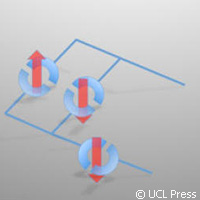Superconductors and X-ray beams: the drawing shapes
An Italian-British team of scientists has succeeded in drawing superconducting shapes using an X-ray beam. Presented in the journal Nature Materials, the study shows how being able to create and control tiny superconducting structures could lead to innovative electronic devices. The research was funded in part by COMEPHS ('Controlling mesoscopic phase separation'), a project supported by the EU. COMEPHS was backed under the 'Nanotechnologies and nanosciences, knowledge-based multifunctional materials and new production processes and devices' (NMP) Thematic area of the EU's Sixth Framework Programme (FP6) to the tune of EUR 3.18 million. Researchers from the London Centre for Nanotechnology in the United Kingdom and Sapienza University of Rome in Italy have successfully manipulated regions of high temperature superconductivity, in a material that combines oxygen, copper and a heavier element called lanthanum, at the Elettra (Trieste) synchrotron radiation facility. Superconductivity, say experts, is a special state where a material conducts electricity with no resistance. In essence, zero energy is wasted. According to the researchers, high temperature superconductivity is triggered when oxygen atoms in the material are re-arranged thanks to X-rays being illuminated. This type was first discovered by scientists a quarter of a century ago. Shapes can be drawn in two dimensions when the X-ray beam is used like a pen. The researchers could also erase structures by applying heat treatments. So not only do the tools allow them to write/draw with high precision, but they can also erase with just a few easy steps and without any chemicals. They say rearranging the underlying structure of a material can be applied to other compounds containing metal atoms and oxygen. Fuel cells and catalysts are an example. 'Our validation of a one-step, chemical-free technique to generate superconductors opens up exciting new possibilities for electronic devices, particularly in re-writing superconducting logic circuits,' says co-author Professor Gabriel Aeppli of the London Centre for Nanotechnology and the Department of Physics and Astronomy, University College London. 'Of profound importance is the key to solving the notorious 'travelling salesman problem', which underlies many of the world's great computational challenges. We want to create computers on demand to solve this problem, with applications from genetics to logistics. A discovery like this means a paradigm shift in computing technology is one step closer.' Commenting on the results, co-author Professor Antonio Bianconi of Sapienza University in Rome says: 'It is amazing that in a few simple steps, we can now add superconducting 'intelligence' directly to a material consisting mainly of the common elements copper and oxygen.'For more information, please visit: University College London: http://www.ucl.ac.uk/ Nature Materials: http://www.nature.com/nmat/index.html
Countries
Italy, United Kingdom



